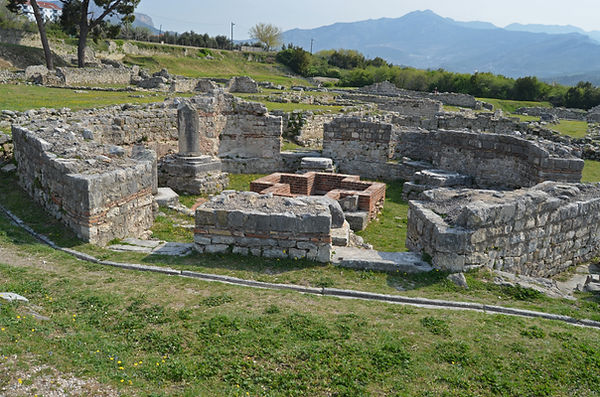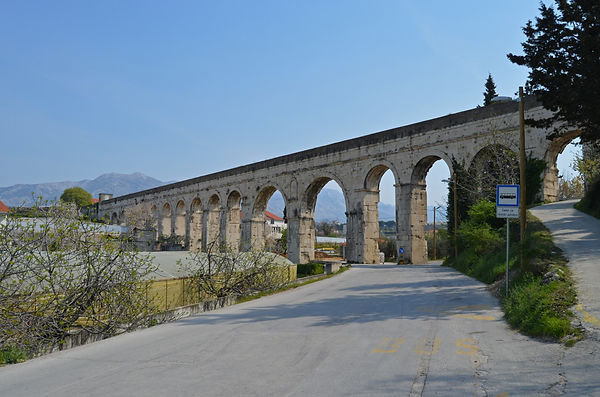Salona (modern Solin, Croatia) was a major Roman city and port in Illyricum on the Dalmatian coast. Finds of coins and pottery suggest prosperity in the 4th century despite the scarcity of building remains from this period. The mausoleum of Anastasios in the Marusinac cemetery may date as early as c.300, while the first episcopal basilica, the southern part of Salona's twin cathedral, may be of the mid-4th century. The northern church, the basilica urban, dates to the first quarter of the 5th century. In the 5th century Salona was in the hands of the Ostrogoths, who contributed to the development of Arianism in the city. It has been suggested that at least one of the basilicas excavated in Salona was Arian. Salona became a metropolis and in 530 the site of a council, its bishop Honorius being called archiepiscopus. Reconquered by the Byzantines under Justinian I c.537, Salona was subjected to Slav and Avar attacks, but probably remained inhabited until the 630s. Its population then migrated to nearby Split, where the episcopal center was also transferred; the greatly venerated relics of the Salonitan martyrs, however, were carried to Rome. Only the mausoleum of Anastasios was able to survive the general destruction of Salona. The site was revived as Solin under Croatian rulers by the 11th century; some new churches were built and in 1076 King Zvonimir was crowned there.
Page under construction





